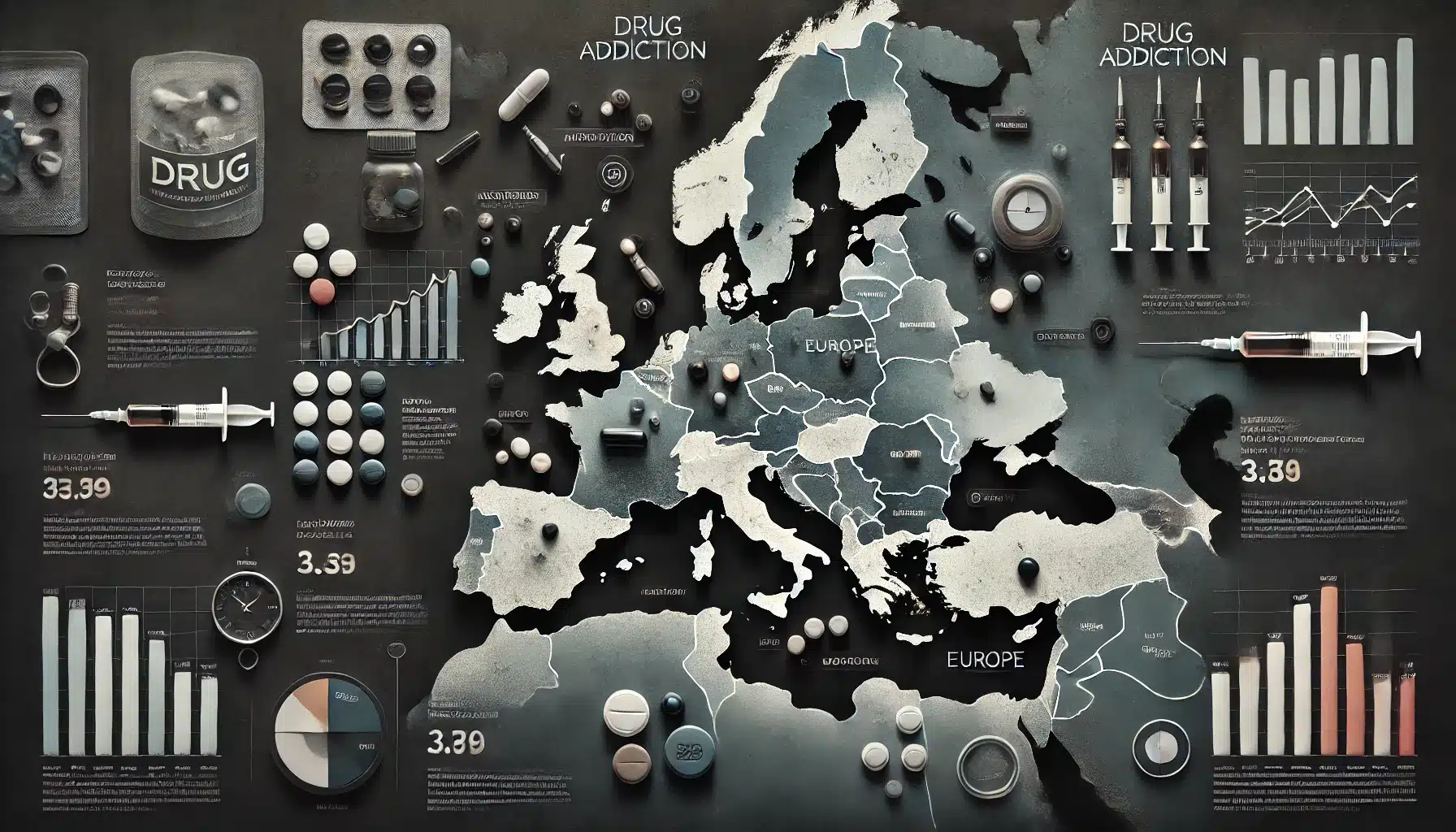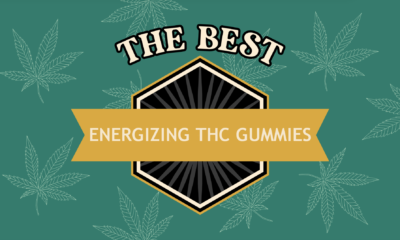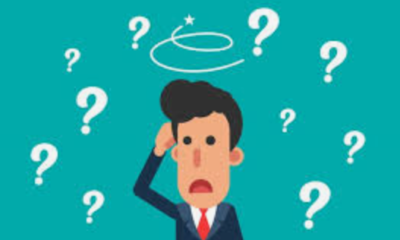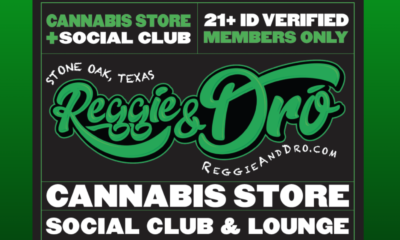addiction
How to Solve the Opioid Crisis – Cannabis | Weed | Marijuana
Published
2 years agoon
By
admin
How to solve the opioid crisis? Surely, there is no single solution since addiction is a complex problem. Any model that suggests that an addict has freedom of choice must be wrong by definition.
Consider what contributes to opioid addiction (or any addiction, for that matter). High living costs, financial stresses, genetics, altered brain chemistry, mental health issues, and other underlying causes.
Or is that all bunk?
Addiction experts tend to fall into two categories. The “left-wing activist” side pushes for “safer supply” and other taxpayer-funded “addiction medicine” brought to you by pharma.
At the same time, the other “right-wing reactionary” side wants to focus on traditional methods for recovery (or, at the very least, tweaking previous models to fit current realities).
This dichotomy is best highlighted in Canada’s two most western provinces: Alberta and British Columbia.
The Canadian Experience
B.C. has gone the way of decriminalization and taxpayer-funded supplies of pharma drugs. If you support Liberals and NDP, you tend to take this view. Alberta represents the other side, championed by Conservative politicians and denounced as reckless and inhumane by left-wing critics.
While it’s clear that the B.C. “safe supply” model doesn’t work, critics aren’t entirely wrong to denounce the Alberta model. The latest provincial data shows that Alberta just hit a record in overdoses, a 45 percent increase compared to the year before.
Which isn’t surprising. Alberta premier, Danielle Smith, parrots the language that recovery must focus on mental health. That users are “victims of the disease” of addiction.
This is what makes the Alberta vs. B.C. model a false dichotomy. If we want to solve the opioid crisis, we cannot rely on debates that don’t upset the status quo.
Whether we should supply people with “addiction medicine,” consumption sites, or a more traditional recovery model is not the issue.
Like with politics, we’re best to throw away these “left” and “right” labels and focus on one universal value we all share: freedom.
How to Solve the Opioid Crisis with the Freedom Model
Just as we won’t solve inflation without addressing the fraudulent banking system, we won’t solve the opioid crisis without first addressing why people like to consume fentanyl.
“It’s not okay in our culture to admit you like being high,” says Michelle Dunbar. “People who don’t like opiates don’t keep doing them.”
“People don’t do something they hate,” says Mark Scheeren. “They certainly don’t become habitual at something they hate.”
Mark and Michelle are co-developers, along with Steven Slate, of the Freedom Model. Unlike other addiction programs, the Freedom Model doesn’t rob people of their autonomy.
Many (if not all) recovery programs tell the user that they’ll forever be addicted. They must “work the steps” or have a blueprint for staying sober. Most of these “experts” follow the brain disease theory of addiction, further cementing the idea that our actions are outside our control.
The Freedom Model rejects that. For over 35 years, at the Saint Jude retreat and online, Mark and Michelle have helped tens of thousands of people break free from this “addiction” mentality and move on with their lives.
Whether that means moderate drug consumption or complete abstinence.
Dr. Carl Hart is living proof that even opioid consumers can moderate and experience withdrawal without having it ruin their lives. In fact, drugs can be an enhancement. That’s why we like to do them.
“The truth of matter is if we didn’t have the word addict,” says Mark. “It wouldn’t be an issue. If we used instead the term substance use, as we use in the book, suddenly that casts a completely different way of looking at it.”
So can the Freedom Model solve the opioid crisis?
What About Brain Hijacking?
The Freedom Model rejects that drugs can hijack the brain. The very concept makes no sense. But don’t substances, especially opioids, alter brain chemistry?
“I type 100 words a minute with less than three errors, typically,” says Michelle. “I’ve been typing for the better part of 40 years. But that doesn’t mean I have to type.”
“And that doesn’t mean,” adds Mark, “that the typewriter has hijacked her serotonin and dopamine receptors.”
The idea that we’re mere meat machines compelled to act by our brain chemistry is something the Freedom Model rejects.
“Addiction also means a dedication to something,” says Michelle. “Nobody gets dedicated to something they don’t see benefits in doing. I think a lot of times, too, when people say they don’t like it, what they don’t like is the high cost they’re paying for. They don’t like the negative consequences.”
But the idea we’re compelled to use because of changes to the brain?
“It’s fucking ridiculous,” says Mark. “It’s like a boxer who gets knocked out in the championship fight, and then says, ‘I hate boxing.’ You never hear them say that. They say they hate losing. So they get back into the ring to win. Drinking and drugging is exactly the same way.”
“As a past boxer,” adds Mark. “I know I was willing to pay the price of having brain damage.”
Isn’t Driving a Car Like Doing Drugs?
Mark and Michelle use the example of driving a car. It’s a dangerous activity with high costs (insurance, legal responsibilities, risk of injury). We don’t frame our preference to drive as a problem, so we don’t call it an addiction.
But don’t certain activities become so ingrained into our behavior that we don’t think about them?
Wouldn’t driving a car and not remembering the commute count as a “hijacked” brain? We’re driving, but we’re not conscious. Aren’t drugs like that?
Mark says suppose you were on your commute.
Out in la la land, and a deer jumps out. My god, you will remember that. But none of that is a criteria of a hijacked brain. That’s the criteria of habituated behavior, where the process of that habit doesn’t go to long-term memory. That has nothing to do with serotonin, dopamine, or any of the nonsense they’re trying to peddle these days as a cause for your behaviors. It’s just the same as any habit that you have. When you habitualize something dramatically, the brain prioritizes in memory and says, we’ll we’ve done this 18 times, this isn’t that important; we don’t have to remember it.
So that’s part of the answer. But what about underlying causes? If I’d rather live on the street and risk my life with fentanyl consumption, I must surely have some underlying mental health issue. Right?
What About Underlying Causes?
Attempts to solve the opioid crisis with standard ideas about addiction and recovery are not working. Whether you believe in the “left-wing” B.C. model or the “right-wing” Alberta model.
What will solve the opioid crisis is the Freedom Model.
One primary reason is their rejection of “underlying causes” for addiction. And while on the surface, this may seem radical, in reality, the role of “underlying causes” as a reason for addiction is a new concept.
Says Mark,
For thousands of years, there’s been inklings and whisperings of this, but nobody really believed that alcohol or drugs were an actual mental elixir. They knew it might be a distraction; if you look in the fables and the Bible, you can see in Proverbs and different places, but nobody took it very serious. Because basically, alcohol and drugs were seen as an activity. They weren’t seen as a medicine. Or that I self-medicate my problems away. That’s a relatively new idea within 80 years.
Michelle references the research and data in the book, particularly in chapter six. She says,
You can clearly see that the vast majority of people who suffer from PTSD, or depression or anxiety, or even bipolar, and some of the other mental health issues – don’t have a substance use problem. They just don’t. There’s not even a weak correlation between these things.
Furthermore, Michelle points out that a small percentage of both tend to get over their substance use problems before solving their mental health issues.
Indeed, If I went to a therapist who said, “You need to keep abusing opioids until we figure out your other problems,” I’d demand a refund. But in treatment, this is the message. You will not solve your addiction until you solve your mental health issues.
“It’s very sad. It’s a horrible, infinite loop that people can’t seem to get out of,” she says.
How The Freedom Model is Different
Mark explains how the Freedom Model is different.
We say: you have anxiety, normal. You have depression. Everybody’s experienced it. You have all these issues, and then we look at the research, and we say, it doesn’t really matter what of these mental issues you might have. You don’t have to marry it to the fact that you like to get high. So we separate it and deal with each one independently.
Instead of “underlying causes,” the Freedom Model emphasizes learned connections. Where you may have trauma, depression, or anxiety, and then you take these problems and associate them with the physical buzz of the drug or drink of your choice.
But the idea that opioids (or even cannabis, for that matter) can solve (or exacerbate) your mental health problems is totally bunk.
This is How We Solve the Opioid Crisis
The Freedom Model is how we solve the opioid crisis. Not by supplying more drugs courtesy of the taxpayer.
Not by looking for “underlying causes” and addressing “mental” health. The only way a homeless addict will stop (or moderate, at least) is by literally changing their mind.
The recovery society wants to deprive them of this. Treatment wants to take away their fentanyl and then act like their preference for the Chinese killer drug is a disease or disorder.
I would imagine the biggest challenge for the Freedom Model is the critics. “Addiction” as a social construct? People living on the street doing opioids who have freedom of choice?
According to Mark and Michelle, the biggest challenge isn’t detractors but tech companies.
“If the book was in the hands of everybody who had a problem, I almost guarantee that 80% would embrace it,” says Mark.
That may seem like a bold claim (like how to solve the opioid crisis with the Freedom Model). But that rate has been the reality of Mark and Michelle’s experience helping others with substance use. And they’ve been doing it for 35 years.
Tech Companies Are Their Biggest Challenge
“Our biggest problem is that the tech companies don’t allow us to spread our message,” says Mark. “It’s purely, purely, tech shadow banning.”
It’s too early to tell if Elon Musk’s Twitter/X is helping reverse the algorithm. But, as Mark and Michelle experienced in the comment section of their YouTube Shorts, this message requires nuance.
But even beyond the nuances of the Freedom Model, there’s money and job security in protecting the status quo.
While the Canadian left wing ironically rewards the big pharmaceutical companies with “safe supply,” Conservative leader Pierre Poilievre says he’ll sue the pharmaceutical companies.
But this is a path Americans already went down. Says Mark,
Statistically, prior to fentanyl, the overdose rates were incredibly static. Right around forty to fifty thousand people a year in Ameirca. And that was static for decades and then fentanyl hits, gives opioids a terrible name, because you’re lacing the opioids with fentanyl, and you have all these kids dying. Then the government needed to demonize someone. So the government got into cahoots with pharmaceutical companies and said, we need something. We’re going to sue the shit out of you for making opioids because the public is demanding it.
But behind the scenes, they said, let’s create the narrative that there is now addiction medicine, Suboxone (Buprenorphine). So we’re gonna sue you, but don’t worry, you’re going to make it on the backend over here with some Suboxone, and we’re going to get these people hooked for life on addiction medicine.
Mark and Michelle question this narrative that people get addicted to opioids because doctors over-prescribe them.
“We’ve had 20,000 people come to our retreats over the years,” says Michelle.
In the beginning, nobody said that, but in the last 15 years, everybody said it. But the truth of the matter is my first time using an opioid was at a party, and I liked it. If you ask most people, they’ll say, I liked the feeling of being on opioids. That’s why I kept using opioids. Not that ‘I found myself hooked, because I took them for a medical problem.’
Heroin’s been around forever. But the narrative never was, ‘Oh, I got surgery for a broken leg, and then I was opioids, and then I ended up shooting heroin.’
And now they’re prescribing it for people that are on amphetamines, people that used alcohol, benzodiazepines, which is deadly, I can’t even imagine. It’s now “addiction medicine,” so everybody gets it.
And the pharmaceutical companies are profiting massively from it. They’ve made up for what they lost in the lawsuits.
How to Solve the Opioid Crisis with the Action Axiom
Of course, there is no such thing as “addiction medicine” since there is no such thing as addiction.
While readers may nod in agreement when we criticize a new pharmaceutical for treating “cannabis use disorder,” some may scoff at the idea that you can’t get addicted to cocaine or opioids.
But this gets backs to what the Freedom Model is all about.
“My whole life, I was obsessed and still am with why people do what they do,” says Mark. He says he first focused on what motivates us to act.
“Is it pain or is it pleasure? There was a tremendous amount of research that said that people are avoiding pain, but I suddenly realized, even when people are avoiding pain, they’re trying to get to a better position.”
Mark realized this while living with his guests, where he purposefully didn’t read any research for ten years. Understanding why people were drugging and drinking despite the high costs and negative consequences was like turning a light on.
So I started to reframe this in my mind and I started realize that humans are always, always moving in the direction of some sort of benefit to themselves. And then that went to, oh my god, they’re autonomous, they have their own thoughts and drives, and then I realized, oh my god, that means we’re a free thinking person, an individual.
If this sounds familiar, it’s because, as Michelle pointed out, many ancient philosophies, like the Stoics, came to similar conclusions. I pointed out that this also sounds like Ludwig von Mises in his opus, Human Action, where he referred to this knowledge as “praxeology.”
Jordan Peterson’s first book, Maps of Meaning, also seems to dance around with this idea. As does the work of urban theorist and social critic Jane Jacobs.
Freedom Works
“When I was little,” says Mark. “I had no control; I was a beaten, neglected kid in a terrible environment. I realized the only place I had freedom was within myself. And I have now watched many people, good lives, bad lives. They’re all living within themselves as autonomous individual people. What a beautiful thing. It’s a miracle.”
Yet, this isn’t what modern addiction and recovery programs are based around. Says Mark,
Recovery is completely dependent on this idea that there is some exterior force, this amorphous thing called “addiction,” this malevolent thing that attacks you and overtakes your psyche and makes you broken. That’s where the whole tyranny of experts comes from. We end up giving our rights away, and the entire legal system gets wrapped into it.
How to Solve the Opioid Crisis for $225
Not only can the Freedom Model solve the opioid crisis, but it can do so cheap compared to rehab costs or a taxpayer-funded supply of “safe” pharmaceutical drugs.
The best part is “addicts” don’t have to go to a physical location (unless they want to). There’s also no separation from friends or family. Mark and Michelle won’t take your phone away and treat you like a prisoner or misbehaving child.
“One of things I started to study was how families can help their loved ones best,” says Michelle.
And it really turns out how to help them best is to leave them alone. Listen to them. Be respectful of their wishes and their opinions, and not thrust their own wants and needs and things on this other person. If you’re going to help somebody who’s struggling with an addiction, a lot of times what that turns into is “You have to change your behavior so I can be happy.” That’s not fair.
Mark and Michelle take the approach, “I don’t know what’s best for that person.” It’s not up to them to decide whether you should consume or not consume opioids (or cannabis, alcohol, gambling, porn, whatever).
“But what is up to me,” says Michelle, “Is to give people the information and then give them room to figure out for themselves how they can be happy in their lives.”
“You were born with every single thing you need to do to get over a drug and alcohol problem,” says Mark. “You don’t need the recovery apparatus, you don’t need meetings, you don’t need rehabs, you don’t need MAT drugs, what you need is the truth.”
Resources
Fortunately, you can find The Freedom Model online. But not every homeless opioid user is going to read a 480-page book. (Not even the audiobook or the free abridged version.)
You may also be struggling and don’t find “self-help books” particularly interesting or helpful.
For that, the Freedom Model has an online masterclass for only $225. I’m not making any commission or financially benefiting from this program. I simply want to solve the opioid crisis without lining the pockets of the politicians and pharmaceutical companies responsible for this mess.
Or by ceding to the “public health” busybodies that call for restrictions on the cannabis industry, label addiction as a brain disease, and treat contrary opinions as “misinformation.”
The Freedom Model is the only model that makes any sense. If you or someone you know is struggling, why not give it a try?
addiction
Can Psychedelics Treat Addiction and Alcoholism?
Published
7 months agoon
September 13, 2024By
admin
Psychedelics, once associated primarily with counterculture and recreational drug use, are now being seriously studied for their therapeutic potential in treating drug addiction and alcoholism. Recent research has shown that substances like psilocybin, LSD, and ayahuasca may have profound benefits for individuals struggling with Alcohol Use Disorder (AUD) and substance use disorders (SUD). These compounds are being reconsidered not only for their ability to induce altered states of consciousness but also for their potential to address addictive behaviors and psychological trauma at the root of addiction.
Psilocybin’s Efficacy in Treating Alcohol Use Disorder
One groundbreaking study, conducted at New York University and Johns Hopkins University, demonstrated the potential of psilocybin in treating Alcohol Use Disorder (AUD). The researchers focused on individuals with severe AUD, administering two doses of psilocybin in conjunction with psychotherapy. The results were notable: participants reported a 50% reduction in heavy drinking days over an eight-month period, with some maintaining abstinence from alcohol even a year later.
The trial followed a double-blind, randomized approach and found that the therapeutic effects of psilocybin were superior to those observed with placebo treatments. Dr. Michael Bogenschutz, a lead researcher in the study, emphasized the importance of the psychedelic experience itself in breaking the cycle of addiction. Psilocybin appears to help patients break through entrenched mental patterns, often revealing deeper emotional connections and realizations that drive more meaningful behavior change.
How Psychedelics Influence the Brain to Combat Addiction
The mechanism behind the efficacy of psychedelics in treating addiction is thought to involve neuroplasticity, or the brain’s ability to reorganize and form new connections. By interacting with serotonin 2A receptors, particularly in the prefrontal cortex and default mode network, psychedelics can enable profound shifts in perception and cognition. These altered states of consciousness allow individuals to confront underlying psychological issues, such as trauma or negative emotional patterns, which are often at the core of addictive behaviors.
Many individuals undergoing psychedelic-assisted therapy report experiencing a “reset” of their mental state, facilitating a more open mindset that helps them engage with therapy in a deeper, more effective way. This contrasts with traditional addiction treatments, such as methadone or buprenorphine, which primarily manage withdrawal symptoms but do not address the psychological components of addiction.
LSD and Its Potential in Addiction Treatment
LSD (lysergic acid diethylamide) has also shown promise in treating addiction, particularly alcoholism. Early studies from the 1950s to the 1970s suggested that LSD might help reduce alcohol dependency, but interest in this line of research waned due to regulatory crackdowns on psychedelic research. However, more recent studies have reignited interest in LSD’s therapeutic potential.
A meta-analysis published in the Journal of Psychopharmacology reviewed data from six trials involving over 500 patients. It concluded that a single high dose of LSD, administered in a therapeutic setting, was associated with a significant reduction in alcohol consumption. The study found that LSD’s psychedelic effects could lead to lasting changes in personality traits, such as openness and emotional resilience, which are crucial for overcoming addiction.
Ayahuasca and Addiction Recovery
Ayahuasca, a traditional Amazonian brew containing DMT (dimethyltryptamine) and MAO inhibitors, has been the focus of recent studies examining its potential to treat addiction. Researchers have found that ayahuasca’s intense psychoactive properties, combined with its ability to facilitate introspection and emotional healing, may help individuals overcome opioid and stimulant addiction. A study published in Frontiers in Pharmacology noted that ayahuasca led to significant improvements in mental health and reductions in addictive behaviors.
Ayahuasca ceremonies, often conducted in a spiritual context, have been shown to promote healing through vivid and sometimes challenging visions. Participants often report gaining insights into the underlying causes of their addiction, leading to long-lasting psychological benefits.
Challenges in Psychedelic-Assisted Therapy
While the results of these studies are promising, the use of psychedelics in treating addiction is not without challenges. For one, the psychedelic experience itself can be unpredictable, and not all patients experience the profound mystical or emotional breakthroughs associated with positive outcomes. The effectiveness of psychedelic-assisted therapy appears to be linked to the quality of the therapeutic environment and the expertise of the facilitators, meaning that careful preparation and integration are key to success.
Moreover, while psychedelics like psilocybin and LSD do not appear to be physically addictive, their use must still be carefully regulated to prevent potential psychological risks, such as hallucinations, anxiety, or psychotic episodes in vulnerable individuals. Current research emphasizes the need for controlled settings where trained therapists can guide patients through their psychedelic experiences.
Ongoing Research and Future Directions
Given the promising early results, psychedelic research is entering a new phase, with larger clinical trials currently underway. The National Institutes of Health (NIH) recently allocated $2.4 million to explore the use of psychedelics in treating methamphetamine addiction, further solidifying the role of psychedelics in addiction therapy. Similarly, ongoing studies are looking into psilocybin’s potential to treat opioid addiction and cocaine dependence, conditions that have been notoriously difficult to treat with conventional methods.
As research progresses, it is likely that psilocybin, LSD, and other psychedelics will become more widely recognized as effective tools for addiction treatment. While more research is needed to fine-tune these therapies and better understand their long-term effects, early indications are that psychedelics could revolutionize addiction and alcoholism treatments in the coming decades.
Conclusion
Psychedelics like psilocybin, LSD, and ayahuasca are emerging as potential breakthrough therapies for treating drug addiction and alcoholism. By promoting neuroplasticity and addressing the psychological roots of addiction, these substances offer an alternative to traditional addiction treatments, which often focus on managing symptoms rather than curing the disease. With ongoing research and increasing clinical trials, psychedelic-assisted therapy may become an essential tool in the fight against substance use disorders, offering hope to millions of people who struggle with addiction, such as alcoholism.
Sources
Johns Hopkins Medicine: Psychedelics in Addiction Treatment
Progress in Neuro-Psychopharmacology and Biological Psychiatry
National Institutes of Health (NIH) Research on Psychedelics
Frontiers in Pharmacology: Ayahuasca for Addiction Recovery
JAMA Otolaryngology – Head & Neck Surgery
Related
addiction
The Evolving Opioid Crisis in Europe: Heroin and Synthetic Threats
Published
7 months agoon
September 12, 2024By
admin
The opioid crisis in Europe is growing in complexity, with heroin continuing to dominate the market while synthetic opioids, such as fentanyl and its analogs, emerge as potent new threats. The 2024 EU Drug Markets Report, released by the European Monitoring Centre for Drugs and Drug Addiction (EMCDDA) and Europol, provides a comprehensive analysis of the heroin and synthetic opioid market, detailing the health risks, evolving trafficking routes, and potential future challenges.
Heroin in Decline? Why Synthetic Opioids Pose a New Threat in Europe
Heroin’s Ongoing Impact in Europe
Heroin remains the most commonly used illicit opioid in Europe, with an estimated 1 million high-risk opioid users. The European heroin market is valued at over €5.2 billion annually, indicating the persistent demand for this drug. In 2021, EU countries seized 9.5 tonnes of heroin, the largest quantity in 20 years. These figures underscore the strong presence of heroin in Europe, despite the introduction of harm reduction programs aimed at curbing opioid use.
The health consequences of heroin use are severe. In 2021, opioids were responsible for three-quarters of Europe’s 6,000 drug-related overdose deaths, with heroin being a leading factor. Long-term users are aging, adding complexity to public health strategies, as older opioid users present with more chronic health problems.
Afghanistan’s Opium Ban: Future Implications for Heroin Supply
Nearly all heroin consumed in Europe is derived from opium produced in Afghanistan. However, Afghanistan’s opium production has seen a dramatic decline following the Taliban’s 2022 ban on poppy cultivation, which led to a 95% reduction in production by 2023. While the immediate impact on heroin availability in Europe has been minimal, the report warns that a sustained ban could lead to future heroin shortages. Such shortages could open the door for synthetic opioids to dominate the market.
The decline in Afghan opium cultivation from 233,000 hectares in 2022 to just 10,800 hectares in 2023 has raised concerns about the future of heroin availability in Europe. Should the Taliban continue to enforce the ban, experts believe the resulting heroin scarcity could increase the use of more potent and dangerous synthetic opioids, exacerbating the public health crisis.
The Rise of Synthetic Opioids: Fentanyl and its Analogues
Synthetic opioids, such as fentanyl, are becoming more prevalent in the European drug market. These substances are far more potent than heroin, and even small doses can lead to fatal overdoses. The 2024 report highlights how these synthetic opioids are contributing to a growing number of overdose deaths and hospital emergencies across Europe. In countries such as Estonia and Sweden, fentanyl is responsible for a significant proportion of drug-related deaths.
Fentanyl analogs are particularly concerning because they can be mixed with other drugs like heroin or cocaine, often without the user’s knowledge. The increasing presence of these synthetic opioids is a major public health concern, as traditional harm reduction measures, such as naloxone distribution and needle exchange programs, are less effective against these more potent substances.
Changing Trafficking Routes and Criminal Networks
Traffickers are increasingly adapting their methods in response to heightened enforcement measures and geopolitical developments. The traditional Balkan route, which brings heroin through Turkey and Bulgaria into Europe, has seen increased enforcement and stricter border controls, prompting traffickers to shift towards alternative routes.
The Southern route is becoming more prominent, with significant heroin shipments passing through Iran and Pakistan before reaching Europe via major seaports. The United Arab Emirates (UAE) has emerged as a key transshipment hub for heroin, providing both logistical support and avenues for money laundering. Meanwhile, the ongoing Russia-Ukraine war has prompted criminal networks to modify their trafficking routes, further complicating law enforcement efforts.
Public Health and Harm Reduction Efforts
Harm reduction strategies have had some success in mitigating the impact of opioid use in Europe. Programs such as opioid substitution therapy (OST) and needle exchange have helped reduce the number of new users injecting heroin, thereby lowering the risks of HIV and hepatitis C transmission. However, the growing prevalence of synthetic opioids poses new challenges. These potent drugs often require stronger overdose prevention measures, such as fentanyl test strips and more widespread access to naloxone, an opioid antagonist used to reverse overdoses.
Additionally, the report notes the importance of expanding data collection and improving early warning systems to monitor emerging trends in opioid use and trafficking. These systems allow public health authorities and law enforcement to respond more quickly to new synthetic opioids entering the market.
Challenges in Treating Opioid Addiction
Treatment for opioid addiction, particularly heroin, is evolving. Europe’s aging population of opioid users presents new challenges, as older users are more likely to have complex medical conditions. Many long-term users require not just drug treatment but also social support and healthcare for chronic conditions related to long-term substance use. Furthermore, gender-specific issues are emerging, as women who use opioids face more barriers to accessing treatment and are more likely to present with co-occurring psychological or social issues.
Conclusion
The opioid crisis in Europe is evolving, with heroin still posing a significant threat to public health, while synthetic opioids like fentanyl are emerging as an even more dangerous force. The reduction in Afghan opium production and the shifting trafficking routes complicate the landscape further. To tackle this complex issue, Europe must continue to invest in harm reduction, international cooperation, and early warning systems to prevent more overdose deaths and manage the changing face of the opioid market. Without a coordinated response, Europe risks facing an even more devastating public health crisis in the coming years.
Related

The fact that some people are eating dogs and cats is a highly sensitive topic that crosses cultural, social, and ethical boundaries. In many regions, these animals are consumed due to cultural traditions and necessity, while in other cases, drug-induced behavior may lead individuals to engage in extreme or unusual dietary practices. This article aims to explore the distinction between cultural norms and the desperate, erratic behaviors driven by substance abuse, focusing on the need for cultural sensitivity while addressing harmful behavior.
When Culture Meets Addiction: Who Is Eating Dogs and Cats?
Cultural Practices and the Consumption of Non-Traditional Animals
In some parts of Asia and Africa, the phenomena of eating dogs and cats has historical roots that are tied to both cultural traditions and the availability of resources. In these regions, the eating of non-traditional animals is a normalized practice and is not connected to drug-fueled behavior.
- Cultural Normalcy: In regions such as South Korea, China, and Vietnam, dogs have historically been consumed as part of traditional cuisines. This practice is not driven by addiction or desperation but by cultural norms that view these animals as a food source rather than pets.
- Food Scarcity: In some communities, especially in impoverished or rural areas, consuming non-traditional animals like dogs or cats is a practical response to food scarcity. The decision to eat these animals is based on survival rather than personal preference or altered judgment.
Drug-Induced Dietary Choices: When Addiction Leads to Extreme Behaviors
In contrast to cultural practices, there are cases where individuals under the influence of drugs engage in extreme or bizarre behaviors, such as eating dogs and cats… This behavior is driven by impaired judgment, psychosis, or desperation caused by addiction, and often occurs in isolated or marginalized communities.
- Methamphetamine and Erratic Behavior: Meth users are known to exhibit extreme and irrational behaviors, including eating animals they wouldn’t normally consider food. Meth-induced psychosis can blur the lines between reality and hallucination, leading to bizarre dietary choices such as consuming pets or strays.
- Desperation from Heroin Addiction: Heroin addicts, especially those living in extreme poverty, may consume non-traditional animals out of necessity. Chronic malnutrition and impaired judgment, combined with isolation from society, can drive addicts to make choices they wouldn’t otherwise consider.
Understanding the Cultural vs. Drug-Fueled Divide
It’s crucial to differentiate between cultural practices and behaviors driven by addiction when discussing the consumption of non-traditional animals. Respecting cultural practices while addressing the harmful impacts of substance abuse requires a nuanced understanding of these different contexts.
- Cultural Sensitivity: When discussing the consumption of non-traditional animals, especially in regions where this practice is accepted, it is important to approach the subject with cultural sensitivity. Condemning these practices without understanding their historical and social context can perpetuate stereotypes and breed intolerance.
- Addressing Addiction-Related Behaviors: Conversely, when the consumption of animals like dogs and cats is tied to addiction, the focus should be on treating the root causes of drug abuse rather than criminalizing individuals. Rehabilitation, mental health support, and access to food resources are critical in preventing desperate behaviors.
Ethical Considerations and Animal Welfare
Regardless of whether the consumption of non-traditional animals is driven by culture or desperation, the ethical treatment of animals is a key concern. The dog and cat meat industries have come under scrutiny for their inhumane treatment of animals, and organizations worldwide are working to promote animal welfare and ethical eating practices.
- Animal Rights in Cultural Contexts: While respecting cultural traditions, animal rights organizations are increasingly advocating for more humane practices within these industries. Campaigns to ban or reduce the consumption of dog and cat meat have gained traction, with a focus on reducing cruelty and promoting alternative food sources.
- Animal Cruelty and Drug Addiction: In cases of drug-induced behaviors, the animals involved often suffer from neglect or harm. Providing support for addicts and ensuring animals are removed from harmful environments can help mitigate this issue.

How to Approach the Issue Globally
Addressing the issue of non-traditional animal consumption, whether cultural or drug-fueled, requires a global approach that balances respect for cultural practices with the promotion of humane treatment for animals. Public health initiatives and cultural sensitivity training can help bridge the gap between different viewpoints while ensuring that animals and people alike are treated with dignity.
- Promoting Cultural Understanding: Efforts to educate the public on the cultural contexts of eating non-traditional animals can help reduce prejudice and promote more respectful global dialogues. Cultural exchange programs and educational campaigns can provide a more nuanced view of these practices.
- Addressing Substance Abuse: On the other hand, combatting the desperation and irrational behavior caused by addiction requires investments in mental health, addiction treatment, and public welfare systems. Providing addicts with support, housing, and access to food can reduce the likelihood of harmful or extreme behaviors.
Conclusion
While the consumption of non-traditional animals like dogs and cats may be culturally accepted in some regions, drug-induced behaviors that lead to similar actions must be understood in a different light. It’s important to address addiction-related behavior with compassion, focusing on rehabilitation and support rather than punishment. At the same time, promoting animal welfare and humane practices in regions where these animals are consumed can create a more ethical global community. By approaching these issues with respect for cultural diversity and a commitment to reducing harm, both animals and humans can benefit.
Related

The best energizing THC gummies of 2025 by Leafly

Mixed Messages From The Feds About Cannabis

How Hemp Helps You Sleep

420 in Texas is at Reggie & Dro

Daily Cannabis Use Can Help People Get Off Opioids (STUDY)

This Wine Issue Is Becoming More Common

Get more for less this 420 at PurLife

Can You Order Cannabis through DoorDash?

Cannabis Enthusiast-Friendy Retreats – GanjaVacations Jamaica

The road ahead for cannabis lending in 2025

Distressed Cannabis Business Takeaways – Canna Law Blog™

United States: Alex Malyshev And Melinda Fellner Discuss The Intersection Of Tax And Cannabis In New Video Series – Part VI: Licensing (Video)

What you Need to Know

Drug Testing for Marijuana – The Joint Blog

NCIA Write About Their Equity Scholarship Program

It has been a wild news week – here’s how CBD and weed can help you relax

Cannabis, alcohol firm SNDL loses CA$372.4 million in 2022

A new April 20 cannabis contest includes a $40,000 purse

Your Go-To Source for Cannabis Logos and Designs

UArizona launches online cannabis compliance online course
Trending
-

 Cannabis News2 years ago
Cannabis News2 years agoDistressed Cannabis Business Takeaways – Canna Law Blog™
-

 One-Hit Wonders2 years ago
One-Hit Wonders2 years agoUnited States: Alex Malyshev And Melinda Fellner Discuss The Intersection Of Tax And Cannabis In New Video Series – Part VI: Licensing (Video)
-

 Cannabis 1012 years ago
Cannabis 1012 years agoWhat you Need to Know
-

 drug testing1 year ago
drug testing1 year agoDrug Testing for Marijuana – The Joint Blog
-

 Education2 years ago
Education2 years agoNCIA Write About Their Equity Scholarship Program
-

 Cannabis2 years ago
Cannabis2 years agoIt has been a wild news week – here’s how CBD and weed can help you relax
-

 Marijuana Business Daily2 years ago
Marijuana Business Daily2 years agoCannabis, alcohol firm SNDL loses CA$372.4 million in 2022
-

 California2 years ago
California2 years agoA new April 20 cannabis contest includes a $40,000 purse















